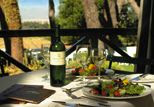The uncontained burning of fynbos on the foot of Table Mountain
Seed dispersal of a serotinous plant after fire
Orchidaceae in Cape Floristic Region
Who Gives A Hoot?
Mice and insects are major pests in agricultural areas. Using pesticides to eliminate this threat to crops has become expensive and disrupts the ecosystem. To attract owls to your farm you need to build them a shelter. Firstly one should determine the kind of owl one would want to attract. Owls have their own preferences. The Barn owl (Tyto alba) is a favourite to use for pest control.They are also the most widely distributed species of owl. By using an owl box to attract owls you introduce a natural predator of the mice and insects. This keeps them under control but also saves time and money. The idea of using owls as a natural rodent control is old, but the method is now getting a second look by environmentally conscious farmers all over the world.
Why should we incorporate owl boxes into everyday farming?
The Barn owl is most frequently seen using nesting boxes, which indicates a shortage in roosting and nesting sites. With the development of forested areas into agricultural areas, many of the owls' habitats are destroyed. Barn owls are especially faithful to one roosting site and will keep returning to it for years.
Examples of Non-Sustainable Pest Management are using poison which not only kills the rodents but also their predators and is harmful to farm workers and livestock, and traps which aren't always successful.
Location Location Location
Firmly attach the nesting box to a wall or tree in a shady quiet place, away from humans and where it is inaccessible to predators.
Natural nesting and roosting sites should be within a radius of 3 km (these site include hollow trees, old barns or bridges).
There should be a low density of well travelled roads within a 1 km radius.
There should be insurance that the habitat for foraging will not decrease within the next 5 years.
Owl boxes can be placed in a barn or on a pole, about 2.5 to 3 m from the ground, which is easily accessible to the owner for maintenance.
Direction: if mounting the box in a barn, it is well protected against the elements and direction of placement does not matter. If the box is placed on an open pole, the opening should face away from the sun, in an open direction so that passing owls will see the dark opening, exactly what they are looking for when searching for a nest site.
Bedding: mulch should be added to the bottom of the box, preventing eggs from rolling and breaking and adding comfort for the owls. Acceptable shavings are pine and fir. Do not use cedar, sawdust and wood shavings.
Maintenance
Owls do not clean their own nests, so it is wise to clean out the mulch every year in a box being used. Always use a mask and surgical gloves when cleaning out a bird's nest!!
Important aspects about attracting owls to your
garden
Only owls that reside in the surrounding area will occupy a nest box in your garden.
Nest boxes, and their location, should mimic the owls' natural environment, be waterproof and have an alluring perch .
Barn owls regularly use perches, which results in an accumulation of white wash on the floor.
Do not use harmful pesticides in your garden and buildings, seek environmentally-friendly methods to control insects.
Bee swarms pose a hazard to Barn owls as they sometimes take over their nest boxes. This can be managed by burning a mosquito coil at the entrance to the box, painting the box with three coats of Boiled Linseed Oil and spraying the outside with Baythroid (Cyfluthrin).
Do not use harmful poisons which will harm the owls and their chicks.




